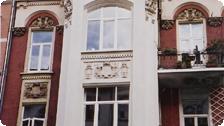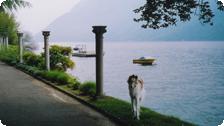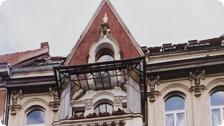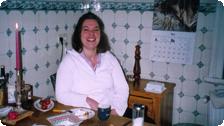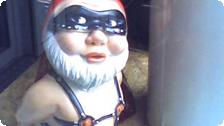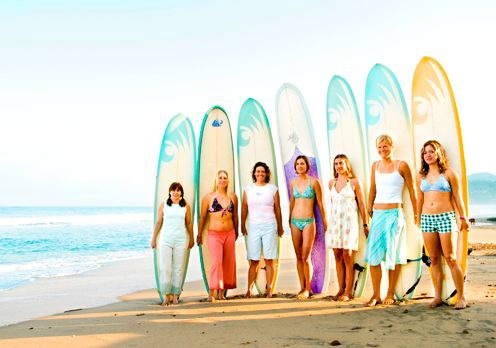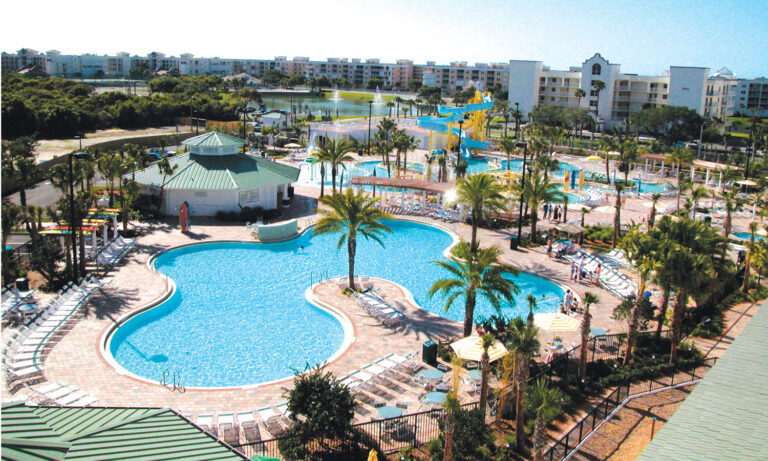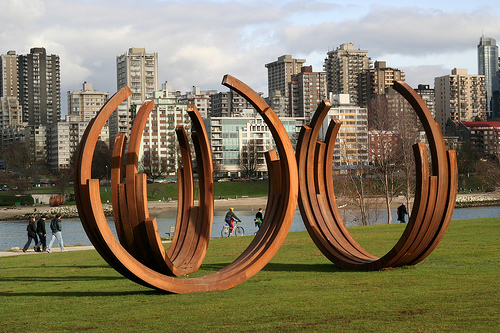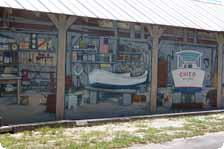Inspiration: Hamburg: On the Reeperbahn at Night at 12:30 a.m.
by Audrey Mei
I did hear some peeps and squeaks from some of you since I didn’t send out a travelogue for two weeks, so here it is! After Rome, I stayed briefly in Florence, where the eyes nearly go blind from the wealth of artwork collected by the Medici family.
Michelangelo’s David (completed when the artist was only twenty-nine) is of course in Florence, standing immaculately under the natural light of the Galleria dell Accademia’s glass cupola. And if you discreetly look around yourself in that hall, you’ll notice that there is a disproportionately large percentage of women lingering, craning their necks with their eyes glued to David’s perfect body, while the sweaty pot-bellied husbands and boyfriends wander on to the early-Renaissance religious artwork department…
On Wednesday, 19 May, I said goodbye to Italy and traveled just over the border to Lugano, Switzerland, where I stayed for three days with my friend Kathrin. Imagine seeing someone familiar after seven weeks of traveling alone! In any case, Kathrin is one of the craziest people I know and her current project is to pretend, for school enrollment reasons, that she is five years younger than she really is. This appears to be insanely stressful but on the other hand, last September she did have the rare opportunity to celebrate her twenty-seventh birthday for the second time, amongst her teachers and fellow classmates, unawares that she overstepped the boundary into the thirties two years ago already.
From Lugano I took a train through the rocky snow-peaked mountains to Zurich, where I spent a melancholic afternoon, then boarded a sleeper car for an overnight ride, waking up 400 miles later as the train was cutting across the flat golden fields of Niedersachsen, Germany. In the train, we passengers were already pulling on our wool socks and wrapping our scarves before stepping out into the fresh morning air.…And at 10:45 a.m. on that Sunday, I was in Hannover, pushing the doorbell at Dürerstrasse 7 where my buddy Susannah opened the door and I dragged my astronomically heavy duffle bag thonk-thonk fifty-four times up the stairs. By the way, my friend Susannah had incidentally also fallen in love with a Portuguese man, of all places from Porto, where, as we all know, the cats smile as they lay themselves down on the doormats at night.
But now I was in Hannover, the sleeping heart of the belly-fat of Northern Germany. I know this city well because I lived here for four years. It’s actually a pleasant city, with the second largest block of intact Art Nouveau architecture in the world. And in these houses, with their curly windows and bellowing roofs, on a Sunday evening the lights go on and the warmth of family life shines like teeth through their tall ornamented facades. But as a family town, it is cursed with being too nothing: not too big, not too small, not too dangerous, not too pretty. No one ever comes to visit, and it is land-logged. And it has this inherent flatness, with scarcely any landscape in sight, so that as night when you walk between the tall houses, for a moment you won’t know if you are moving forward or if the city is rolling backwards, behind you, under your feet…
I stayed in this city just overnight then traveled onward to Hamburg….Now Hamburg, my friends, is the famous shipping town of the north, enormous, and in its northern non-beauty it is attractive again. It is similar to Hannover, but plugged into a million-watt generator. The houses are the same, but taller. The people are the same, but livelier. The food is the same, but fresher, and suddenly you have a very cool city which embodies the ultimate overcast, harbor-town romantic. I am staying here in Olli’s apartment, which is sparsely furnished and lies in the middle of the Schanzenviertel, the city’s hippest neighborhood, which actually defined grunge long before grunge was even a word in Seattle. The Schanze simply has dinginess in its blood, thus creating grunge with urgency. It’s located a spit away from the Reeperbahn, one of Europe’s most well-known red-light districts, and also happens to be the neighborhood with the largest cluster of Portuguese cafés.
And to match the towering houses are the tall northern Germans. Each time I see Olli, Dirk, Alex, and Hendrik, they seem to be getting only taller and thinner, and I’m afraid that the next time I see them I’ll be surrounded by long, swaying ropes whose faces will be too far away to talk to. This extreme height is especially noticeable in those Portuguese cafés around the corner, where the tiny Portuguese baristas look like escapees from Oz. This may be why they never smile, and bitterly slam the coffees onto the bar as they serve the tall, blond customers who mispronounce the names of the pastries anyway…
Olli lives on Schanzenstrasse and Susanne lives on Susannenstrasse. To the right of Olli’s house door is a lamb butcher; to the left there is a pork-sausage boutique. In the next house are stores specializing in Hello Kitty underwear and S&M garden trolls, and on the corner is Scarpovino, a shop that sells shoes and wine…go figure.
Gotta go to bed. Ciao kids,
Audrey
Travel Tips for Germany: Hamburg and Hannover
Getting around in Germany is easy. Public transportation is for the most part immaculate.
Hamburg
Where to eat:
Thai Restaurant Bok: Schanzenstr. 27. A hit, and even coming from San Francisco, I could get hooked on this Asian joint.
In the Schanzenviertel (Schanzen quarter), you’ll find plenty of places to rest your tired hinter, chow down, and people-watch some strange birds. Take the S-Bahn to Sternschanze. Turn right on Susannenstrasse, where the bustle begins, and if you continue to Schulterblatt, you’ll find the Portuguese cafes on your right. Order a galão with a nata, and you’ll get a café au lait with an egg custard pastry.
Café Paris: Rathausstraße 4. Modeled after a Parisian metro station, behind the Rathaus.
What to see:
Kunsthalle: Glockengießerwall. Art museum with fine and contemporary sections. I love this place and have fond memories of it and its modest permanent collection. While you are at it, take a walk around the Alster.
Church of St. Michael (Michaeliskirche): Englische Planke. Northern Baroque architecture, burnt down twice, rebuilt each time in precise replication. You can climb the 132 meters to the top of the tower to behold a panoramic view of the city.
Die Reeperbahn: Also called Der Kiez. You have your choices of where to waste your life on a Saturday night. Olli and Dirk’s favorites are Zum Silbersack, Mandarin, and Meanie Bar. I’m sure there are others. Start late, end even later; one beer per bar. If the birds aren’t singing when you get home, you didn’t do it right.
St. Pauli: The neighborhood is probably named after the beloved soccer team, not the other way around. They’re a miserable team—even my sister who plays violin can see that. If you’re lucky, you’ll catch the natives on a game day, you’ll hear the singing like thunder rolling in the distance. Look out for the beer cans and miscellaneous up-chuck on the sidewalk afterwards.
Blankenese: Take a drive in this luxurious neighborhood. Park and take a walk down Blankeneser Hauptstrasse to the end, where you’ll find a little beach and a Fisch Kiosk. Order a beer and a Bismarck Brötchen, this braised herring and onion sandwich will leave your breath smelling ba-ah-ah-d for the rest of the day. A must.
Hannover
Where to eat:
Bayerische Botschaft: Thielenplatz. The name literally translates to “Bavarian Embassy.” This restaurant is a Bavarian beer hall with original southern German dishes. Not for vegetarians, you must try the “Schweinehaxe” (pork knuckle) and the “halbe Mastente” (half of a roasted duck).
Reizz: Bödekerstraße 42. The eternal question where to eat or hang out for a beer in the List was often answered with Café Reizz. The owners took this forlorn restaurant space and restored it to its original splendor. The food is good, but the atmosphere is right for casual to semi-fine, good beer selection.
Café LuLu: Wedekindplatz. I don’t care what the guidebooks mention, this is one of the most beautiful squares in Hannover, be it small. Especially in the summer, when the terraces are open at night and the trees are lush and green. LuLu’s food is absolutely nothing special, but it’s an ideal place to meet friends for coffee. The language school across the street at No. 3 is owned by my good friend Hans, whose grandfather built the house. LuLu is almost his office.
Brasserie Bruxelles: Across from the train station, entrance on Joachimstraße. Belgian specialties, but the real eye-catcher is the spacious, sleek inner courtyard, with a glass roof so you can also sit there in the winter.
Maestro: Basement of Künstlerhaus, Sophienstraße 2. In the arched cellar of an art museum, warm atmosphere and nice presentation. One of my personal favorites.
What to see:
Neuer Rathaus und Gartensaal: Trammplatz 2. The New City Hall and Garden Room. Enter the front door, walk towards the side of the staircase, where you’ll find a little doorway that lead back to Der Gartensaal, a huge, light, elegant cafe and restaurant that opens grandly to the classical view of the pond behind the Rathaus. Back inside the Rathaus, spend some time looking at the city models of Hannover, from its early walled beginnings through WWII until now. The dome of the Rathaus is also open for visiting, the elevator travels in an arc.
Sprengelmuseum: Something the Hannoveraners should be really proud of, this world-class collection of modern art.
Oststadt and List: U-Bahn station Lister Platz. The architecture of this area is scattered but you can find some long blocks of Jungenstil. Bödekerstraße, Podbielskistraße, and Jacobistraße. Nearby, also the Eilenriede, Hannover’s little Central Park.
Shopping on Georgstraße, near the Opera House. Or backtrack to Karmarschstr and continue on into the Old Town (Altstadt).
Discover more from Tango Diva
Subscribe to get the latest posts sent to your email.
